
ARC-Grain Crops, Potchefstroom
 Dr Bradley Flett,
Dr Bradley Flett,ARC-Grain Crops, Potchefstroom
 Pieter Bruwer, agronomist:
Pieter Bruwer, agronomist:Langfontein Seeds (eastern Highveld and northern KwaZulu-Natal)
An outbreak of bacterial leaf streak (BLS) in the Piet Retief and Amersfoort areas was reported during the 2020/2021 maize growing season and again early in the 2021/2022 season. Since then, the disease has been noticed in other maize production areas (through communication or reports by producers). This constitutes the reason why it was decided to carry out a short survey to determine the intensity and severity of BLS in some maize production areas where the disease has not previously been reported.
Survey of BLS
A pilot survey of BLS was carried out early in 2022. With the assistance of a producer, Solly Vermaak, a few farms were visited in Bothaville in the Nala Local Municipality in the Free State on 2 February 2022. Typical symptoms of BLS were found in one section of a farm in the area (Figure 1). Infected leaf samples were collected from infected plants for bacteria isolation and characterisation.
The researchers then moved to Wakkerstroom on 8 February, where a number of farms were visited in Mpumalanga and KwaZulu-Natal, assisted by Pieter Bruwer, agronomist for Langfontein Seeds.
In KwaZulu-Natal, symptoms of BLS were found in one maize farm in the Endumeni Local Municipality (Figure 2). In Mpumalanga (Figure 3), symptoms of BLS were noticed in five farms with four of them in the Pixley Ka Seme Local Municipality and one in Wakkerstroom. Two out of the four farms in Pixley Ka Seme were in the Volksrust area and the others in Amersfoort and Wintershoek. During the survey, infected leaf samples were collected to confirm whether the infections were caused by BLS and photos were taken of infected plants and leaves.
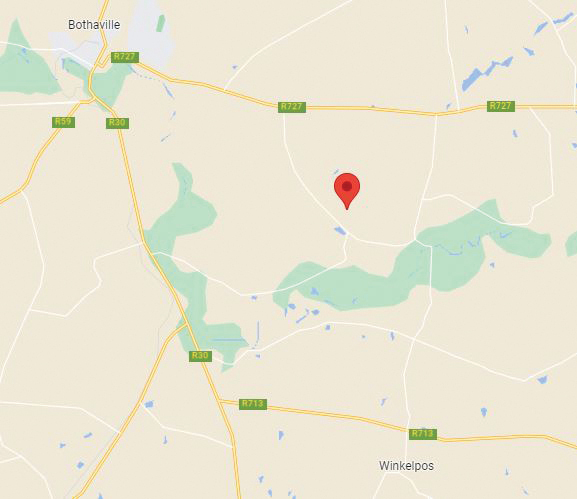
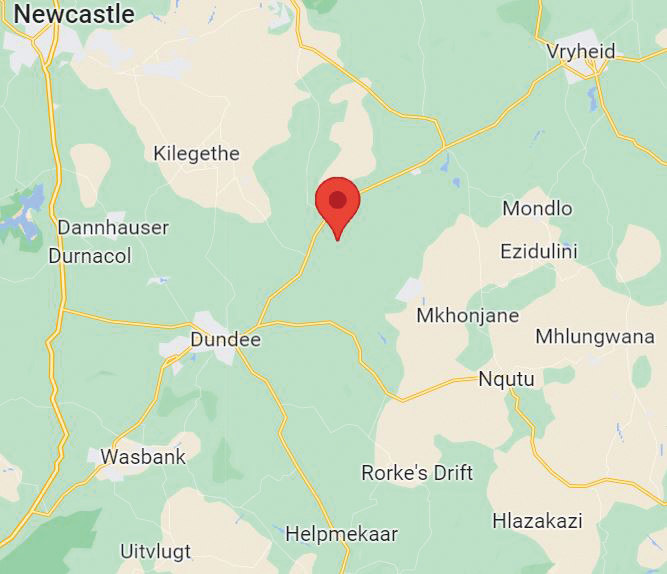
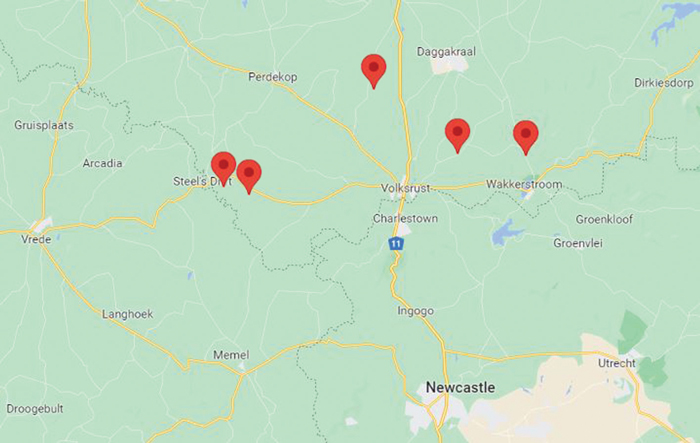
Field observations
During this pilot survey researchers noticed that the disease occurred at different growth stages of the plants and on different maize cultivars as well as in diverse environmental conditions and on a variety of soils. The disease was found only in certain sections in the field and on some farms the infections appeared to be quite severe.
At least 50% leaf damage was estimated, but not all plants were equally affected and there was less than 15% leaf damage as an average over infected fields. There have been fewer reports of BLS over the past couple of seasons. However, the rate at which the infected plants and areas have increased over the last two maize growing seasons (2020/2021 and 2021/2022) is concerning. This could be attributed somewhat to the heavier rainfall and high humidity recorded in these seasons in the areas where lesions were observed. These conditions provided a favourable climatic environment for infection and disease development. It is also possible that some of the maize cultivars grown in these areas are more susceptible to BLS, but this needs to be quantified in a cultivar trial including all common cultivars currently grown in these areas.
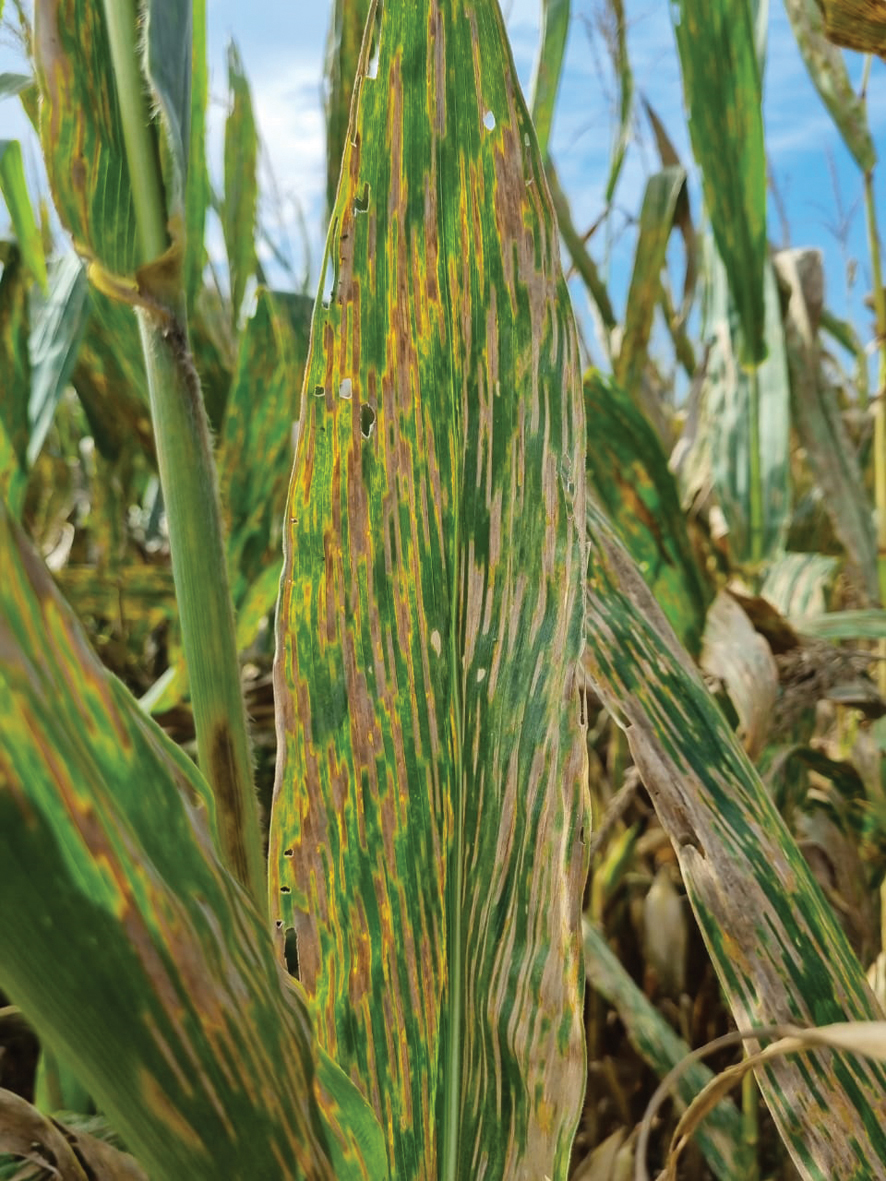
Photo: Van Zyl Coetzee, Farm-Ag International (Pty) Ltd
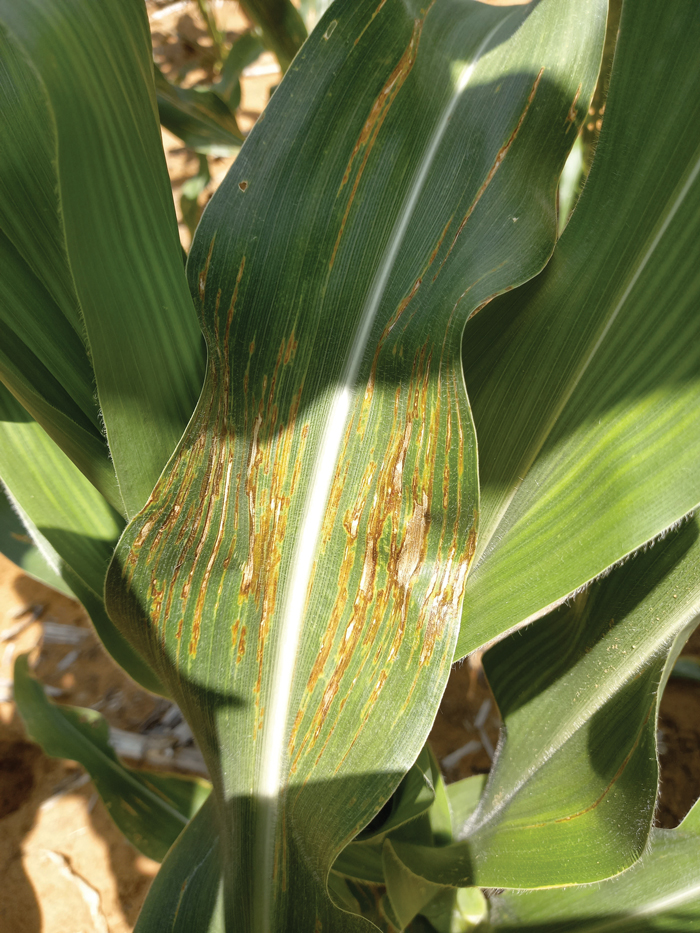
Photo: Pieter Bruwer, Langfontein Seeds
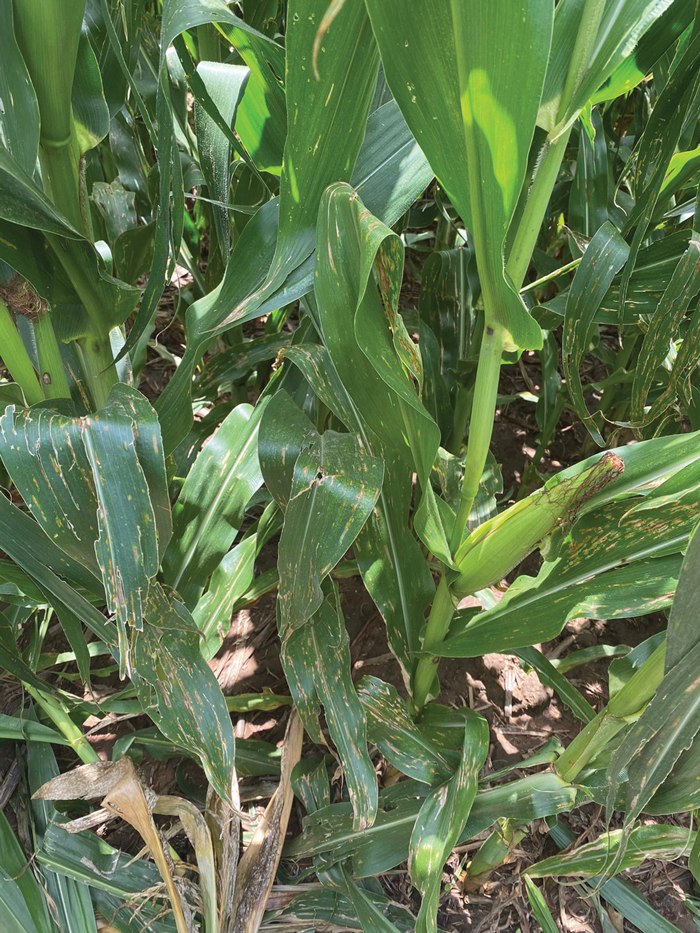
Photo: Pieter Bruwer, Langfontein Seeds
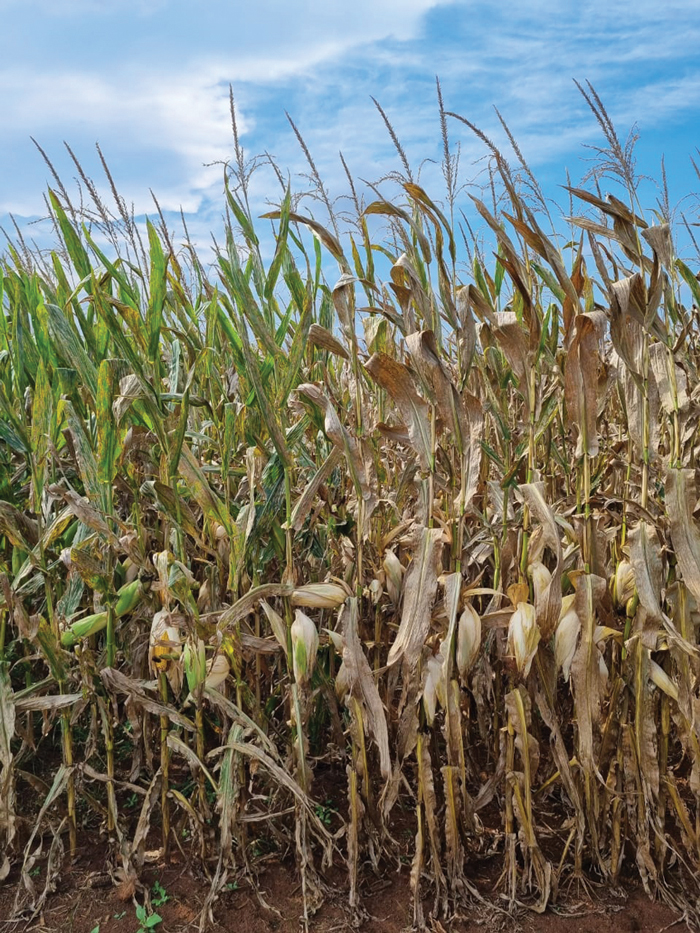
Photo: Van Zyl Coetzee, Farm-Ag International (Pty) Ltd
Is it seed-borne?
Another serious concern is the lack of knowledge and awareness amongst individuals and producers who scout the fields as they could be unaware of infections in the area – resulting in BLS not being reported and monitored. The question now is: ‘Where did the inoculum come from?’ It is suspected that the disease could have come from the seeds. In order to investigate this, maize kernels from infected plants were collected to test if the infection was seed-borne, using molecular techniques.
Producers should take note that there are no in-season management practices for BLS. However, proper identification is important to avoid misidentification as a fungal disease and thus incorrect and costly treatments with fungicides. Of interest is the fact that the fungicide Azoxystrobin 250 EC applied six weeks post emergence on the farm in the Dundee district slowed down the progress of the infection. It is highly likely that the fungicide reduced infection due to the ‘stay green and yield increase’ effect caused by the chemical make-up of strobilurin.
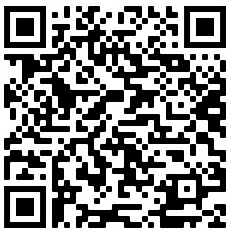
Background about the disease
Xanthomonas vasicola pv. zeae is the causal bacterium of BLS of maize. It was first reported in South Africa in 1949. To date maize is the only reported host of this pathogen, which was until recently only recorded to occur in South Africa.
Initial work was carried out by Dr Molapo Qhobela during his PhD studies at Kansas State University under the guidance of Dr Larry Claflin. During this study he worked on the identification of the pathogen. More recently Dr Teresa Coutino and Dr Mike Wallis at the University of KwaZulu-Natal screened genotypes for resistance to BLS.
BLS was previously generally found in the warm and dry maize production areas such as the North West Province, northern Free State and south-west areas of Gauteng during certain favourable seasons.
The disease can occur sporadically and environmental conditions play a major role in disease intensity. Symptoms on maize plants can be observed at all plant growth stages, but are most severe from just prior to and after flowering. Initial symptoms appear as dark streaks on the leaves. These enlarge to form narrow, yellow streaks which begin to show necrosis (dying off) within the lesion. Streaks can be 2 mm to 3 mm wide and vary greatly in length. These lesions reduce the photosynthetic ability of the leaves, which inevitably results in yield losses.
BLS can easily be confused with grey leaf spot. However, the lesions of BLS are longer and slimmer than those of grey leaf spot. Typical grey leaf spot lesions are rectangular and move up between the leaf veins parallel to each other (Photo 5).
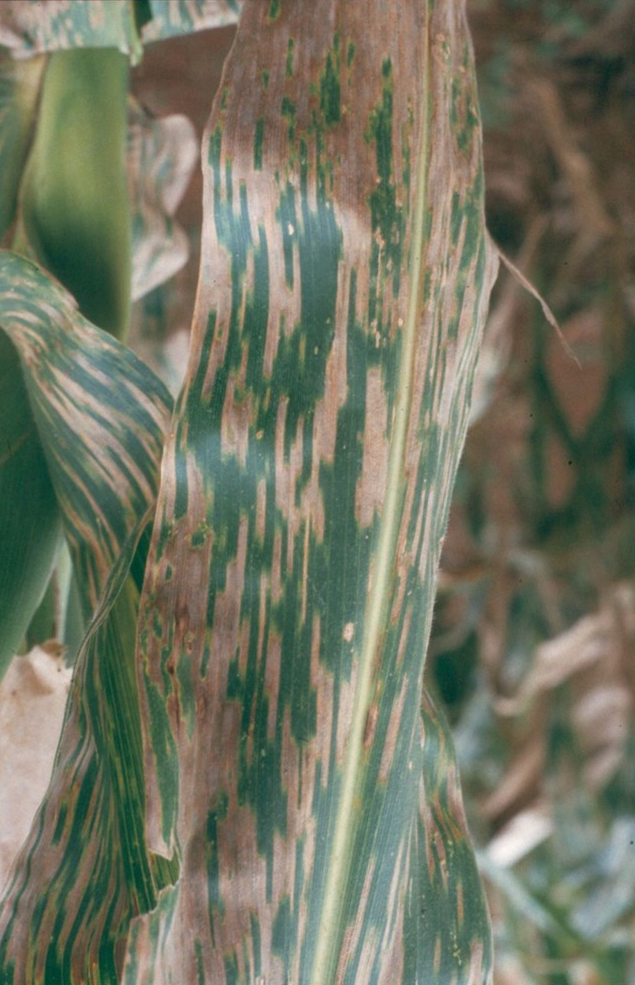
 For more information or questions related to BLS and grey leaf spot, please contact Dr Bradley Flett at 082 920 9733 or FlettB@arc.agric.za or Dr Henry Njom at 071 096 4382 or NjomH@arc.agric.za.
For more information or questions related to BLS and grey leaf spot, please contact Dr Bradley Flett at 082 920 9733 or FlettB@arc.agric.za or Dr Henry Njom at 071 096 4382 or NjomH@arc.agric.za.





























